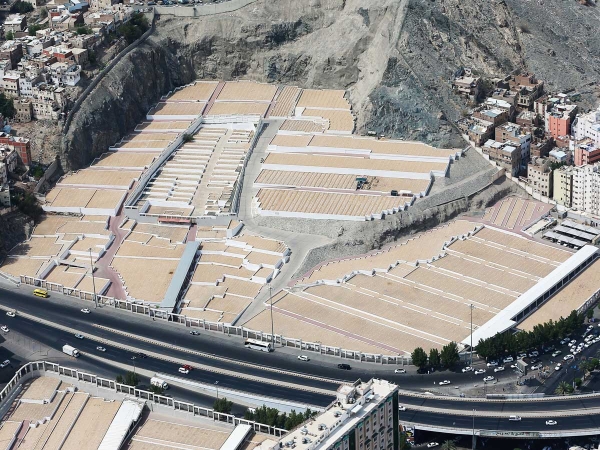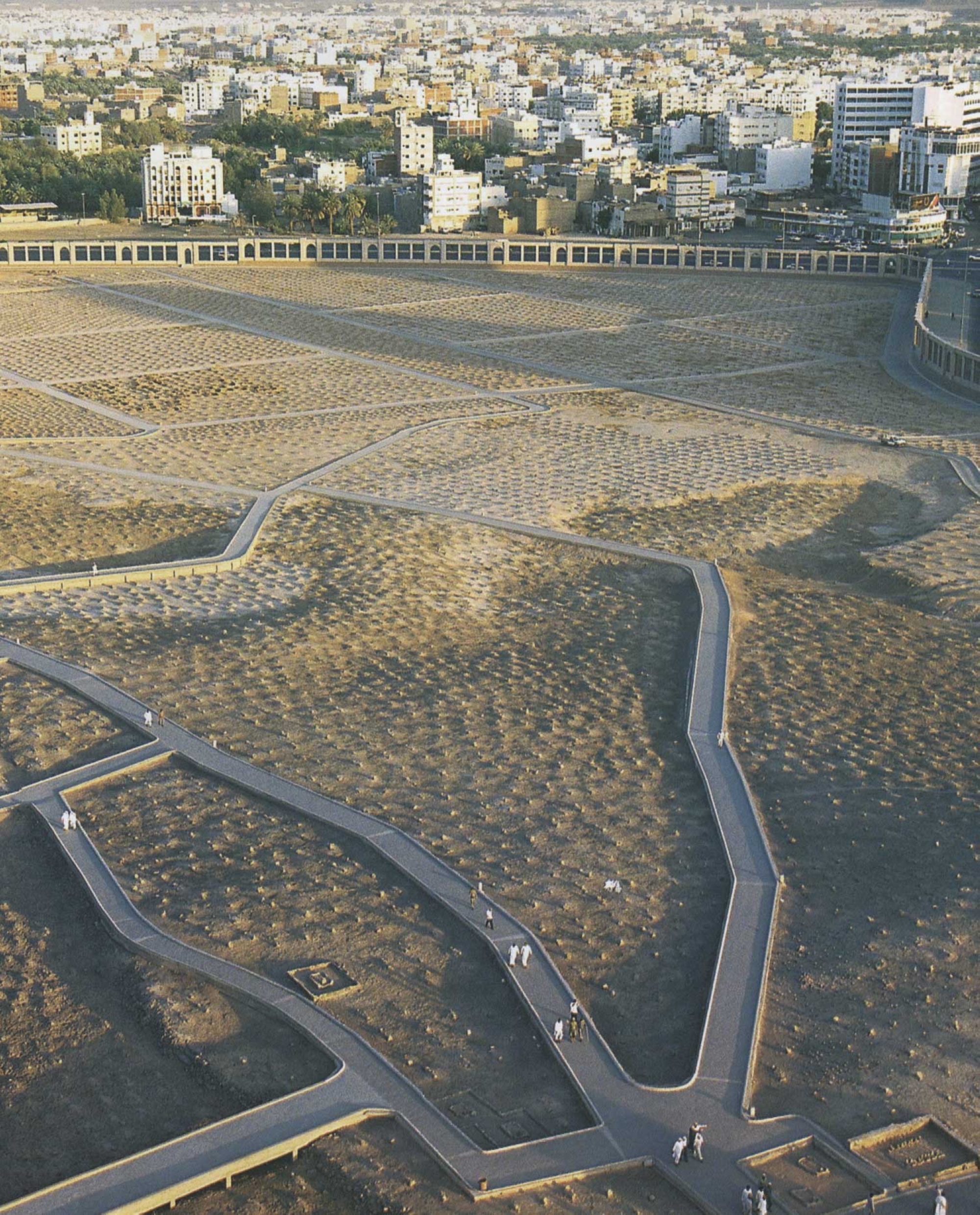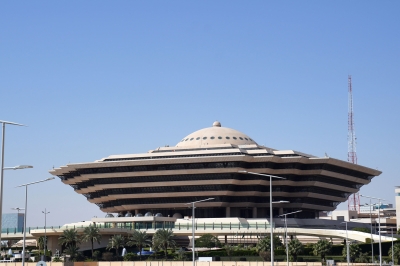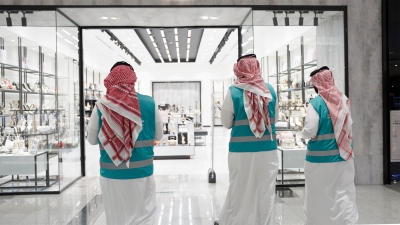


Cemeteries in the Kingdom of Saudi Arabia are designated areas for burying the deceased. They are typically enclosed, open-air spaces, and their services are overseen by the Ministry of Municipalities and Housing.
The Kingdom is home to historical cemeteries that hold significance for both Saudis and Muslims in general, such as al-Ma'alah Cemetery in Makkah al-Mukarramah and al-Baqi' Cemetery in al-Madinah al-Munawwarah.
To relieve relatives' burdens, the Kingdom provides free processing, hearse, and burial services for the deceased. Follow-up begins from the moment death is reported until burial in public cemeteries for Muslims, whereas non-Muslims are buried in dedicated cemeteries.
Burial services at the Saudi Arabia cemeteries
Burial services in Saudi cemeteries are provided free of charge and immediately across all provinces, governorates, cities, and villages. It is possible to inquire about providers of transportation and preparation services for the deceased, as well as to search for a deceased person's grave and print a burial certificate. Additionally, open data, including statistics on the number of deceased and their information by Hijri years, is available on the official website of the Ministry of Municipalities and Housing.
Humanitarian services in Saudi cemeteries
The charitable sector in the Kingdom plays a significant role in providing cemetery and funeral services, fostering a spirit of humanitarian solidarity, and supporting community cohesion. Given the humanitarian nature of cemetery services, the Kingdom has established the non-profit organization "Foundation of Honoring the Dead" to organize charitable activities in this field.
Prominent Saudi cemeteries
Historically, the cemeteries of al-Mu'alla cemetery and al-Baqi' are recognized as significant ancient Islamic burial grounds in the Kingdom. Among the cemeteries established in modern times, al-Oud Cemetery is notable, as it is the final resting place of King Abdulaziz Bin Abdulrahman Al Saud, the founder of the Kingdom, along with his sons, the Kings Saud, Faisal, Khalid, Fahd, and Abdullah, and many other members of the royal family. Al-Adl Cemetery in Makkah al-Mukarramah is also famous for housing the remains of several prominent Saudi princes and figures, including the sons of King Abdulaziz: Princes Naif, Mansour, Abdulmohsin, Majid, as well as Prince Abdullah al-Faisal, Prince Saud al-Faisal, Prince Abdullah Bin Abdulaziz Bin Musaed Bin Jalawi, Sheikh Abdulaziz Bin Baz, and Sheikh Mohammed Bin Saleh al-Uthaymeen.
The expansion of the cemeteries in Saudi Arabia
The cemeteries in the Kingdom are undergoing continuous expansion to increase their capacity according to the needs of each city. Old cemeteries are fenced, nearby buildings are separated from them, and the operation of cemeteries is entrusted to specialized institutions with expertise in preparation and burial services. The operations of cemeteries are entrusted to specialized institutions with expertise in preparation and burial services, ensuring necessary supplies are provided. Additionally, qualified personnel are trained for operational tasks, improving the overall performance of cemetery services.

Historical cemeteries in Saudi Arabia
The Kingdom is distinguished by hosting several ancient Islamic cemeteries, which continue to receive funerals and serve as burial sites. Among these is al-Mu'alla Cemetery, one of the oldest cemeteries in the Arabian Peninsula. It holds the resting place of Khadijah Bint Khuwaylid, the first wife of the Prophet Muhammed, peace be upon him (PBUH), and Mother of the Believers, may Allah be pleased with her.
Among the prominent and ancient cemeteries in the Kingdom is al-Baqi' Cemetery, located in the southeastern part of the Prophet's Mosque in al-Madinah al-Munawwarah. It holds the remains of approximately ten thousand companions of the Prophet Muhammed (PBUH), including his companion and the third caliph, Uthman Ibn Affan (may Allah be pleased with him), as well as the wives of the Prophet (PBUH), except for Khadijah Bint Khuwaylid and Maymunah Bint al-Harith, whose grave is located separately in a designated cemetery in al-Nawariyah neighborhood of Makkah al-Mukarramah.
Cemeteries of ancient civilizations and Kingdoms in Saudi Arabia
The Kingdom is home to several historical cemeteries that bear witness to ancient civilizations and kingdoms, including the First Kingdom of Kindah. The burial sites of this kingdom are located in the ancient al-Faw Village, approximately 150 km southeast of Wadi ad-Dawasir Governorate, part of Riyadh Province.
The cemeteries of the First Kingdom of Kindah are considered some of the oldest family group burial sites in the Arabian Peninsula. They belonged to individuals and families who held significant social and political status during that era.
Al-Faw contains tombs designated for nobles, where each tomb consists of two rooms, one on the west and the other on the east, with a central descent leading down to the tomb, reaching a depth of 3.5 m. The village also includes tombs for common people, which resemble Islamic tomb designs and were constructed using the same materials as the village houses. These tombs contain a collection of jars buried alongside the deceased.
Among the archaeological tombs are the burial sites at the Thaj archaeological site in al-Jubayl, located in the Eastern Province. A collection of valuable jewelry, gold, and rubies, known as the "Thaj Treasure", was discovered there in 1998. The treasure includes a shiny gold mask, necklaces, gold coverings, a small statue of a woman, and two gold rings inlaid with carved red rubies.
It is believed that this burial site dates back to the Hellenistic period. Historical and archaeological evidence suggests that settlement in the Thaj area dates back to the Stone Age and flourished between approximately 332 BCE and the first century CE.
Funerary passages in Saudi archaeological cemeteries
Some archaeological sites in the Kingdom contain ancient funerary corridors, constructed around 4,500 years ago. These passages are particularly concentrated around al-Khaybar Governorate in al-Madinah al-Munawwarah Province and form one of the most visually dense funerary landscapes in comparison to similar sites around the world.
The Kingdom has documented, through its historical and archaeological research, more than 17,800 pendant-shaped stone tombs in the primary study areas of al-Ula and al-Khaybar Governorates. Around 11,000 of these tombs are part of the funerary passages.
Related quizzes

